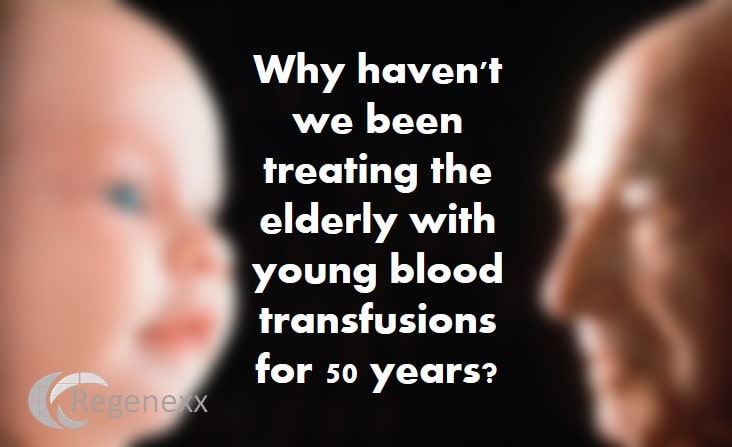The Ugly Side of Science: The Fight Over Young Blood and Aging
A while back I blogged on new research that showed that infusing old mice with young blood helped the mice function more like younger mice than their elderly counterparts. This seemed like a discovery of major proportions and these results have since been replicated. However, this week, a scientific fist fight of sorts erupted over dueling researchers trying to figure out why this works – one thinks it involves a certain protein and another thinks it involves a different molecule. To a clinician, this major dust up shows the ugly side of for profit, modern university science.
The idea that blood from a young animal shared with an older animal helps the aged one is not new. In the 1950s, professor Clive McCay of Cornell stitched together the circulatory systems of young and old mice in a technique he called heterochronic parabiosis. In that experiement, he found that the cartilage of the old mice looked younger and that he could extend the life span of old mice. Given the simplicity and profound implications of a blood transfusion from a young donor to an older person, this discovery should have led to large animal trials and then by the 1960s to human clinical trials. These studies never occurred, instead the technique was dusted off the shelf about a decade ago by several researchers studying aging in mice. In 2005 Conboy, et. al. showed that young mouse blood helped rejuvenate old stem cells. Other studies soon followed showing reductions in aging and cognitive decline in mice. Finally, almost 60 years after the effect was reported in 1956, last year scientists at Stanford pulled the trigger on a small human clinical trial that will give young blood to Alzheimer’s patients. The reason this took so long and the big blow up this past week between two scientific teams on how this works exposes the dark and scary underbelly of modern university for profit science.
Modern medical science is reductionist – meaning it seeks to break things down into it’s component parts so that we can better understand how things work. There is certainly nothing wrong with and everything to gain by understanding the “why” of how the body works. However, one practical reason that modern science has become reductionist is that by figuring out a mechanism, drugs can be targeted to create the same effect. These molecules can then be patented, FDA approval can be sought, and the only monopoly tolerated in our economy can be exploited – once the drug is approved. Again, there’s nothing wrong with any of this process, except when “why” gets in the way of helping patients. The young blood story is a great example. We know blood transfusions are safe and we know that millions of elderly people have already had countless blood transfusions from pooled blood of their type where the average age of the donor was younger than the recipient. So practically, in this question of Young Blood and Aging, all we don’t know is how elderly people will respond to blood from exclusively younger donors. So why did it take six decades to get a clinical trial and why are two scientific teams fighting over the mechanism in Nature Communications? Money. There is simply no money to be made by giving the elderly young blood transfusions, but some university somewhere (and some professor) who figures out how this works will earn huge money from licensing the rights to the patent on the drug that does the same thing.
The upshot? Few in the scientific community of reporters and bloggers have commented this past week on the obvious. The fight over how young blood makes the old seem young is not about science, it has never has been. It’s about patents and money in science, where the good of the patient often takes a back seat to the university-pharma profit machine.

If you have questions or comments about this blog post, please email us at [email protected]
NOTE: This blog post provides general information to help the reader better understand regenerative medicine, musculoskeletal health, and related subjects. All content provided in this blog, website, or any linked materials, including text, graphics, images, patient profiles, outcomes, and information, are not intended and should not be considered or used as a substitute for medical advice, diagnosis, or treatment. Please always consult with a professional and certified healthcare provider to discuss if a treatment is right for you.

